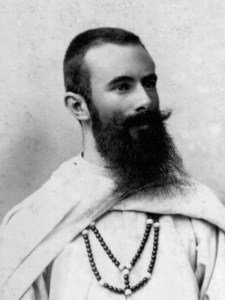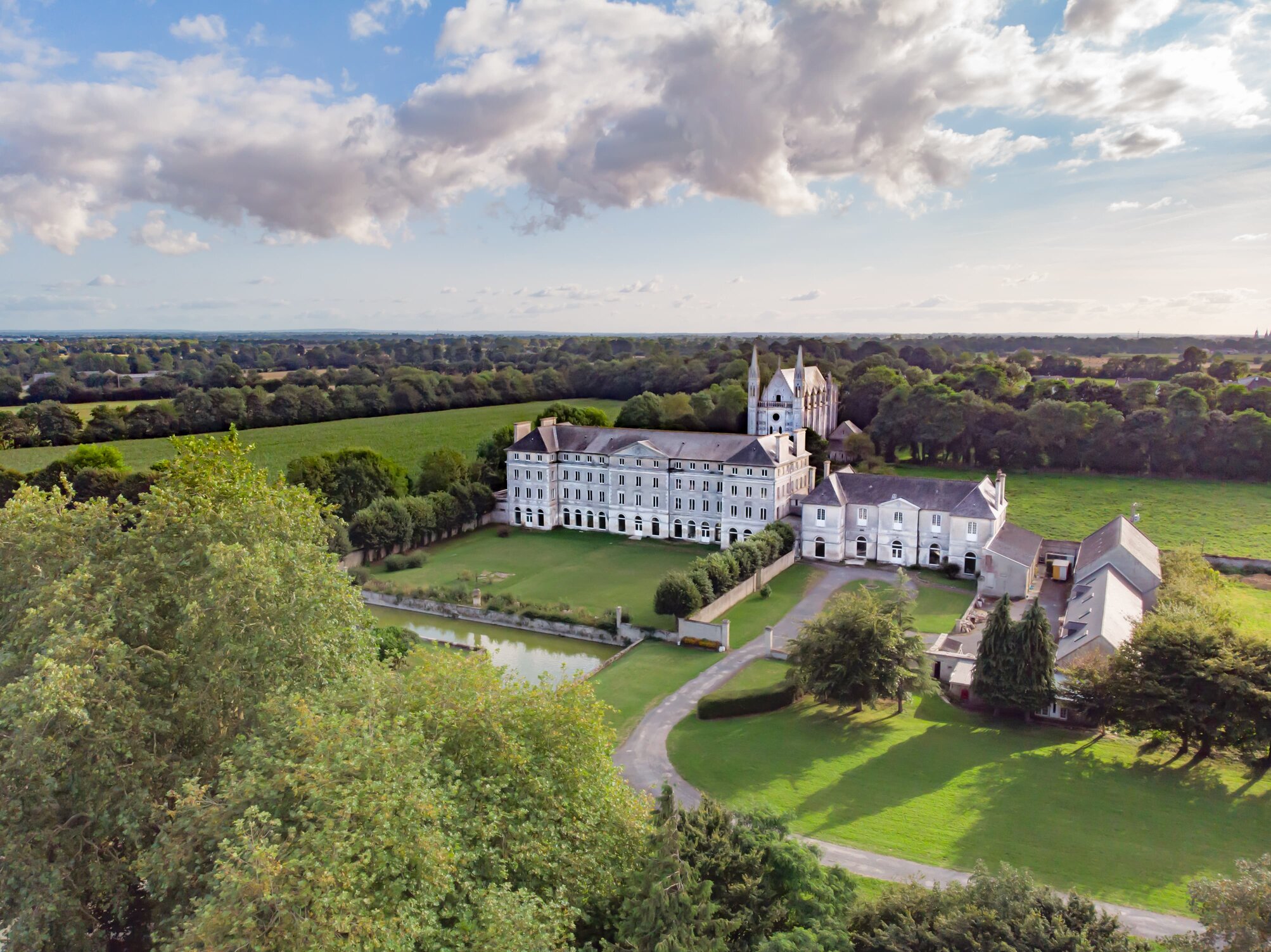 Fr. Maurice Belliere. Photo credit: White Fathers (Missionaries of Arica)
Fr. Maurice Belliere. Photo credit: White Fathers (Missionaries of Arica)
On October 15, 1895, Maurice Belliere addressed a letter to the prioress of the Lisieux Carmel, whose name he did not even know, which became the foundation for a great spiritual friendship between him and the future St. Therese of Lisieux.
 Chapel of the former Major Seminary at Sommervieu. Photo credit: Wikimedia
Chapel of the former Major Seminary at Sommervieu. Photo credit: Wikimedia
Maurice was a twenty-one-year-old seminarian (of the diocese of Bayeux) with missionary ambitions; he was studying theology at the Major Seminary in Sommervieu. The chapel of this seminary, pictured above, will figure importantly in the story of Therese's second missionary brother, Fr. Adolphe Roulland.
 Major Seminary at Sommervieu. Photo credit: Brendan Riley Photos. Used with permission.
Major Seminary at Sommervieu. Photo credit: Brendan Riley Photos. Used with permission.
Inspired by St. Teresa of Avila, whose feast it was (and also, of course, Therese's feast day during her lifetime), Maurice asked "that a nun devote herself particularly to the salvation of my soul, and obtain for me the grace to be faithful to the vocation God has given me, that of a priest and a missionary."1 He added that he was about to leave for his year of military service (from which seminarians in France were no longer exempt), where he would be "subjected again to the assaults of a world which is not entirely dead for me."2
Maurice's letter probably reached the Lisieux Carmel on Wednesday, October 16. Mother Agnes of Jesus (Therese's sister Pauline), then prioress, read it and asked Therese to undertake this mission. This decision eventually gave birth to a correspondence which contains many of Therese's most personal insights and shows her capacity for a relationship at once personal and apostolic. Reading her letters to Maurice allows her to draw the reader into the same intimate friendship she enjoyed with him. We will follow this story as it develops over the next two years of her life.
For a preview, read a short but authoritative version of Maurice's life story at "150th anniversary - Father Maurice Belliere," written by Piet van der Pas, M. Afr., a member of the White Fathers, for one of their publications.
You can also read my booklet Praying for Priests with St. Therese of Lisieux, prepared for the Catholic Truth Society in 2009 and now available only as an e-book. It contains a resume of Therese's apostolate of prayer for priests, a selection of the passages I consider most powerful from her letters to Maurice Bellliere and to Fr. Adolphe Roulland, and a novena composed wholly of words written by Therese. I am proud that the print version remained available for about nine years, and I'm happy that now readers in any location can have instant access to the e-book and give it to friends without the trouble of shipping it. I'm particularly enthusiastic about this booklet because it is an inexpensive resource but contains the most beautiful excerpts from Therese's correspondence with these two young Frenchmen.
(Purchases through the link support this Web site).
Notes:
1. Major seminaries are schools where men study at the college and post-college level to prepare for the priesthood. Note that the seminary in Sommervieu was closed in 1906, after the French Law on the Separation of Church and State was passed in 1905. Minor seminaries, more common in the past than today, were high schools where young men considered suitable for the priesthood were encouraged to enroll, in the hope that those called to the priesthood would go on to a major seminary. Today they are often called “high school seminaries.” In Therese's time there was a minor seminary in Lisieux.
2. Maurice & Therese: The Story of a Love, by Patrick Ahern. New York, New York: Doubleday, 1998, p. 16. (As this letter was not addressed to Therese, it does not appear in the published collections of her letters. To my knowledge, this book is the only book that contains a complete English translation).
3. Ibid., p. 16.